Inanna – Prominent And Highly Honored Mesopotamian Goddess
A. Sutherland - AncientPages.com - The goddess of the ancient Sumerian city of Uruk is known as Inanna. She is frequently mentioned in academic literature.
During the early Akkadian reign in Mesopotamia (c.2334-2154 BC), Inanna was associated with Ishtar.
Goddess Inanna - Credit: Adobe Stock - roomyana
In the 2nd millennium BC, her cult spread widely among the Hurrians, Mitanni, and Phoenicians (Phoenician Astarte). Finally, in Greek mythology, the same goddess is Aphrodite.
This article uses her name, Inanna, as she was known among the Mesopotamians. Inanna was initially worshiped as a vegetation deity and later as the goddess of love, sex, erotic attraction, and patronized marital sexuality. She symbolized fertility, war, weather, and crops, but she also had many other aspects. She was highly honored, especially in Uruk's Eanna temple complex (meaning the "House of Heaven").
According to the myths of Enmerkar, Inanna was originally the goddess of Aratta, but later, Uruk, a rival of Aratta, began to enjoy her favor.
However, her cult was not so significant before the conquest of the Sargon of Akkad. During the post-Sargent era, Inanna became one of the Sumerian pantheon's most widely recognized and honored deities. People built a large number of temples dedicated to her across Mesopotamia. Thus, her cult continued to flourish until its gradual decline began between the first and sixth centuries AD, related to the emergence of Christianity. And yet, Inanna's cult was strong enough to survive in Upper Mesopotamia among Assyrians as late as the eighteenth century.
As mentioned, this Sumerian goddess had many different aspects and fulfilled a double role. On the one hand, she was the goddess of procreation; on the other, she was worshipped as a warrior goddess, an extremely war-like personality often called the "lady of armies."
Unlike other deities, Inanna personified the planet Venus, setting in the West and then rising again in the East. She could descend into the netherworld and then return to the heavens. We remember that the Egyptian god Ra could also make similar journeys, crossing the sunny sky by day in his solar barque and traveling through the underworld by night.
 Inanna receiving offerings on the Uruk Vase, circa 3200-3000 BC. Credit: Osama Shukir Muhammed Amin FRCP(Glasg) - CC BY-SA 4.0
Inanna receiving offerings on the Uruk Vase, circa 3200-3000 BC. Credit: Osama Shukir Muhammed Amin FRCP(Glasg) - CC BY-SA 4.0
The goddess's iconic statue shows her holding a ring, the so-called Inanna's knot, a sacred symbol exclusively connected with this goddess. The knot was a hook-shaped and twisted knot of reeds that symbolized the doorpost of the storehouse, a common sign of fertility and abundance. Other Inanna's symbols included the lion and the eight-pointed star, which became Ishtar's primary symbol, and the rosette.
We must refer to her different aspects to understand how important the goddess Inanna was. Inanna was the queen of the seven temples of Sumer and the queen of animals. She was depicted sitting on a sizeable earthly lion or moved on divine bulls. Among other symbols associated with her was the owl and sometimes the moon, as she was sometimes considered the daughter of Nanna, the Moon-god, and Ningal, daughter of Ningikuga, the goddess of reeds, and Enki, the god of magic, crafts, and wisdom.
Inanna Possessed Special Forces – Me
She possessed me, the special forces which earlier belonged to the god Enki. The gods gave these powers to other gods or kings-priests, who were the representatives of the gods on earth and safeguarded the continuation of civilization.
Legend says that Inanna got Enki drunk with beer and forced him to give her me. He gave her many unique gifts and strength, so she became the queen of heaven and earth. 'Me' were special forces for her because they allowed her to enter the underworld and return from there.
Aware of her extraordinary abilities, the goddess decided to extend her power and descend to the Land of the Dead. She knew that the ruler of this realm was Ereshkigal, and she hated her. She abandoned her temples in the cities and began to prepare for the journey.
Goddess Ishtar (Inanna) on an Akkadian Empire seal, 2350–2150 BC. She is equipped with weapons on her back, has a horned helmet, and is trampling a lion held on a leash. Image credit: Sailko - CC BY 3.0
She feared that even she who was bound by divine laws might be put to death and imprisoned in the world of the dead. So, she instructed her servant that if she did not return in three days, he would go for help. Inanna went underground, was deprived of divine rights, killed, and imprisoned in the world of Kur (Irkalla), the Ancient Mesopotamian underworld,
Enki came to help Inanna. Using the water of life and the food of life, she revived the goddess and was allowed to leave the kingdom of the dead on the condition that she designated her successor. It turned out to be her lover, the god Dumuzi, kidnapped and imprisoned in the underworld.
Inanna was creative, clever, and cunning-she outwitted Enki, the god of wisdom and the goddess Ereshkigal. In Sumerian literature, the goddess was depicted as a young, attractive, noble personality. She could be a happy lover, a bride, and an unhappy widow. Amazingly, she could play almost all the female roles except for two.
She was never a mature person and had no sense of responsibility.
It was a long time ago when Inanna existed, representing an uncivilized woman. She was something special. She evoked desire and, at the same time, fear in men. It happens in modern times, too.
Inanna tried to achieve her goals by arousing men's desire, and she knew how to do it.
Written by – A. Sutherland - AncientPages.com Senior Staff Writer
Updated on Sep 26, 2023
Copyright © AncientPages.com All rights reserved. This material may not be published, broadcast, rewritten or redistributed in whole or part without the express written permission of AncientPages.com
More From Ancient Pages
-
 Why Did Pirates And Sailors Wear Earrings?
Ancient History Facts | Feb 15, 2016
Why Did Pirates And Sailors Wear Earrings?
Ancient History Facts | Feb 15, 2016 -
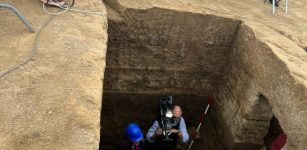 Intact 2,600-Year-Old Etruscan Tomb Opened In Vulci- Exceptionally Rare Artifacts Found Inside
Archaeology | Oct 31, 2023
Intact 2,600-Year-Old Etruscan Tomb Opened In Vulci- Exceptionally Rare Artifacts Found Inside
Archaeology | Oct 31, 2023 -
 Illapa: Powerful Master Of Clouds, Rain And Hail – Worshipped By Inca People
Featured Stories | Jul 7, 2016
Illapa: Powerful Master Of Clouds, Rain And Hail – Worshipped By Inca People
Featured Stories | Jul 7, 2016 -
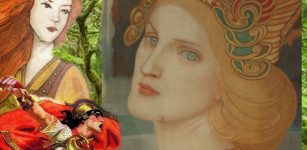 Aoife: Beautiful Female Warrior, Lover Of Cuchulainn And Mother Of His Only Son In Irish Beliefs
Celtic Mythology | Mar 18, 2019
Aoife: Beautiful Female Warrior, Lover Of Cuchulainn And Mother Of His Only Son In Irish Beliefs
Celtic Mythology | Mar 18, 2019 -
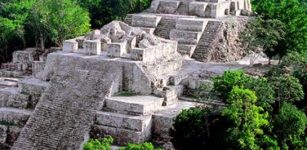 El Mirador: Ancient Pyramids Hidden In The Lost City Of The Maya
Featured Stories | Aug 1, 2018
El Mirador: Ancient Pyramids Hidden In The Lost City Of The Maya
Featured Stories | Aug 1, 2018 -
 Ancient Site Tres Zapotes Offers Evidence The Olmecs Practiced Shared Governance
Archaeology | May 30, 2017
Ancient Site Tres Zapotes Offers Evidence The Olmecs Practiced Shared Governance
Archaeology | May 30, 2017 -
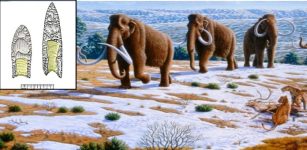 Study: Paleo-Americans Hunted Mastodons, Mammoths And Other Megafauna In Eastern North America 13,000 Years Ago
Archaeology | Jun 15, 2023
Study: Paleo-Americans Hunted Mastodons, Mammoths And Other Megafauna In Eastern North America 13,000 Years Ago
Archaeology | Jun 15, 2023 -
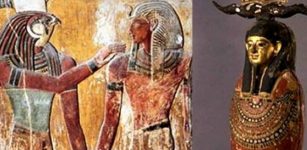 Sokar – Patron Deity Of Ancient Necropolis Of Memphis In Lower Egypt
Egyptian Mythology | Feb 19, 2019
Sokar – Patron Deity Of Ancient Necropolis Of Memphis In Lower Egypt
Egyptian Mythology | Feb 19, 2019 -
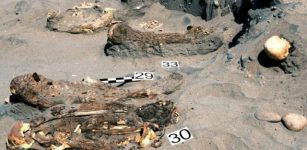 Atacama Desert And Its Ancient Lakes Can Rewrite South American History – Is An Ancient Lost Civilization Buried Beneath The Sand?
Civilizations | Oct 19, 2016
Atacama Desert And Its Ancient Lakes Can Rewrite South American History – Is An Ancient Lost Civilization Buried Beneath The Sand?
Civilizations | Oct 19, 2016 -
 New England’s Abandoned Stone Walls Deserve A Science Of Their Own
Featured Stories | Jan 5, 2024
New England’s Abandoned Stone Walls Deserve A Science Of Their Own
Featured Stories | Jan 5, 2024 -
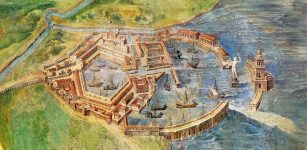 Portus: History Of Ancient Roman Hub Of Commerce – Reconstructed With New Methods
Archaeology | Jul 17, 2019
Portus: History Of Ancient Roman Hub Of Commerce – Reconstructed With New Methods
Archaeology | Jul 17, 2019 -
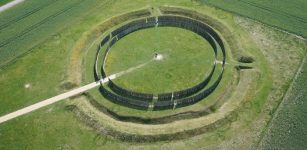 New Study: Middle Neolithic Circular Enclosure Of Goseck – Sacred Place And Astronomical Observatory
Archaeology | Aug 9, 2023
New Study: Middle Neolithic Circular Enclosure Of Goseck – Sacred Place And Astronomical Observatory
Archaeology | Aug 9, 2023 -
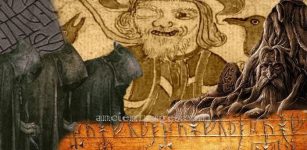 God Of The Gallows And How Odin Hanged Himself From Yggdrasil To Know Secrets Of Runes
Featured Stories | May 7, 2018
God Of The Gallows And How Odin Hanged Himself From Yggdrasil To Know Secrets Of Runes
Featured Stories | May 7, 2018 -
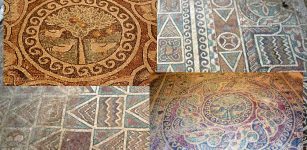 A 1,800-Year-Old Amasya Mosaic Goes On Display For The First Time After Seven Years
Archaeology | Jul 21, 2020
A 1,800-Year-Old Amasya Mosaic Goes On Display For The First Time After Seven Years
Archaeology | Jul 21, 2020 -
 48,000-Year-Old Tooth That Belonged To Neanderthal Child Found In Northern Italy
Fossils | Sep 19, 2020
48,000-Year-Old Tooth That Belonged To Neanderthal Child Found In Northern Italy
Fossils | Sep 19, 2020 -
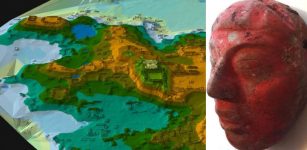 Ancient Tomb Of Maya Ruler Te’ Chan Ahk Discovered In Guatemala
News | Sep 14, 2017
Ancient Tomb Of Maya Ruler Te’ Chan Ahk Discovered In Guatemala
News | Sep 14, 2017 -
 Prehistoric House Of The Dead Discovered In Wiltshire – Is This The Burial Place Of Ancestors Of Stonehenge Builders?
Archaeology | Jul 17, 2017
Prehistoric House Of The Dead Discovered In Wiltshire – Is This The Burial Place Of Ancestors Of Stonehenge Builders?
Archaeology | Jul 17, 2017 -
 Who Were The Sin Eaters?
Ancient History Facts | Jan 21, 2020
Who Were The Sin Eaters?
Ancient History Facts | Jan 21, 2020 -
 Mystery Of King Solomon’s Mines: An Unsolved Ancient Enigma
Featured Stories | Aug 9, 2018
Mystery Of King Solomon’s Mines: An Unsolved Ancient Enigma
Featured Stories | Aug 9, 2018 -
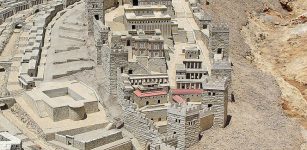 Has a 2,000 Year Old Podium Been Found in the City of David?
Civilizations | Sep 2, 2015
Has a 2,000 Year Old Podium Been Found in the City of David?
Civilizations | Sep 2, 2015


